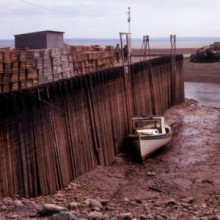On this week's Question of the Week, we plunge into a question about tides! We find out how the tide times are worked out to the nearest minute, and why anyone would need such precision. Plus, we ask why your spoken and singing accents may not match, and if you're trapped in the desert, is it better to drink wine than drink nothing at all?
In this episode

00:00 - Timing the Tides?
Timing the Tides?
Dr Ken George, University of Plymouth, Institute of Marine Studies. I'll answer the question, 'how can one predict tides so precisely?' The answer is they are so dependent upon the Sun, Earth, Moon system which is a system which changes extremely slowly. Namely over tens or even hundreds or millions of years. In a lifetime there is very little change. Therefore the tides are the most predictable natural phenomena on Earth. Indeed, the only thing which is going to stop you predicting tides accurately for let's say a hundred years time is silting or dredging of harbours. You can predict tides years in advance, you can publish tide tables for next year, 2009 and even a decade hence if we so wish. Only about 98% of the energy in the sea level variation is predictable. The bit which is not predictable is caused by storms. People will be very aware of that in the last two days we have had a severe storm striking the south of the UK. In many places the tide rose and the sea level rose, to be more precise, owing to the storm. Why do we need to know tides with such precision? There are two main areas which we are concerned with. One is coastal flooding - how high your tides can bee predicted and the second one is for the passage of ships over shallow water, over shoals. It's very important that they know the height of the tide over a shoal so that they have sufficient clearance under the keel. If they have insufficient clearance then they will scrape the bottom or in the worst case actually go aground and be stuck.
The Bay of Fundy at High TideThe Bay of Fundy at Low Tide










Comments
Add a comment